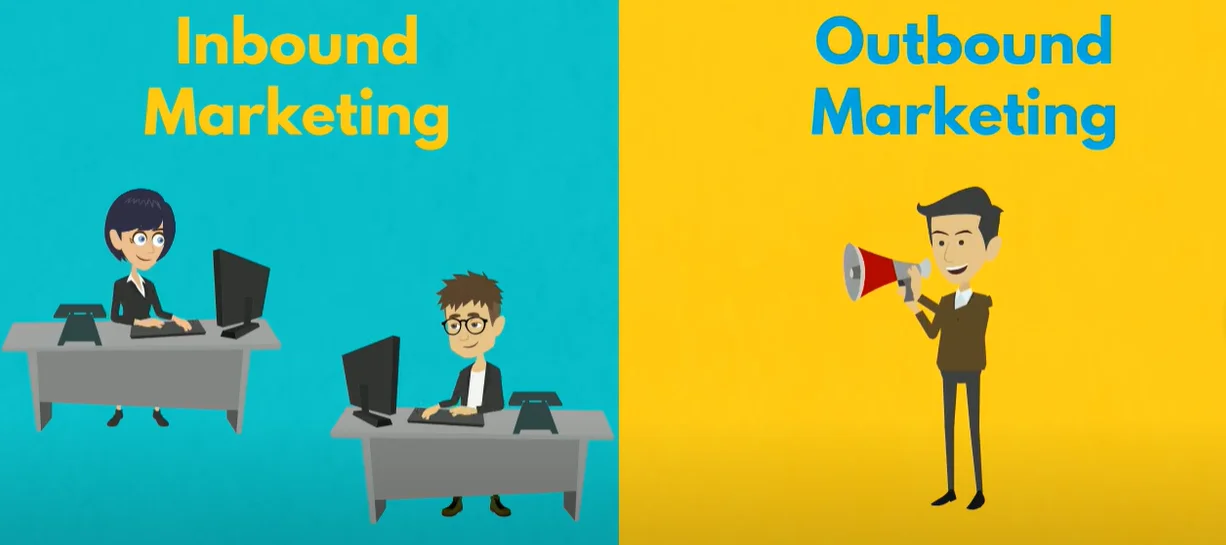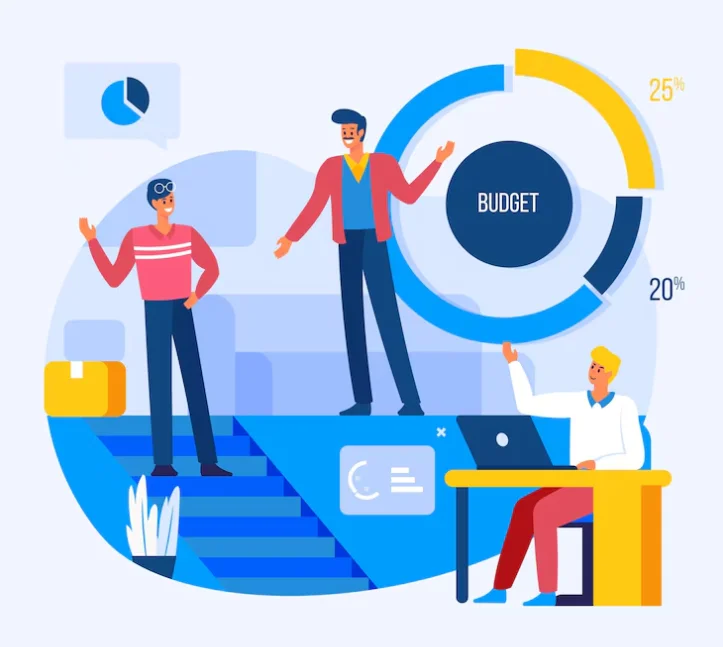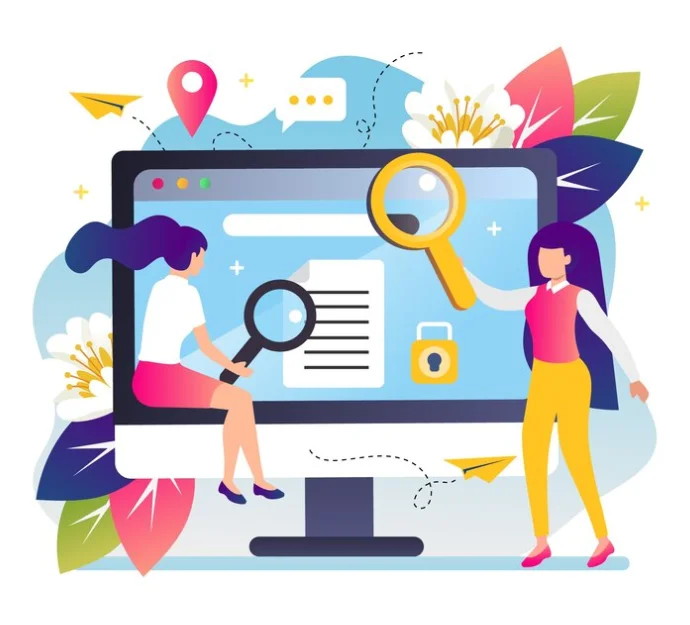What is Inbound Marketing? And How Does it Work?

Nowadays, when E-commerce business is becoming more and more fierce, it is necessary for companies to constantly find effective ways to connect with their audience, build lasting relationships, and drive growth. Traditional marketing methods, often referred to as outbound marketing, have become less effective as consumers grow tired of intrusive advertisements and sales pitches. This is when inbound marketing promotes its effects. It is considered a strategy focused on attracting customers through valuable content and experiences that meet their needs.
In this comprehensive guide, we’ll explore everything you need to know about inbound marketing, from its definition to actionable strategies that help you connect with your audience and grow your business.
What Is Inbound Marketing?

Inbound marketing is a marketing strategy concentrated on attracting potential customers through valuable content and experiences. Unlike traditional outbound marketing (such as TV commercials or cold calls), which actively tries to get people to buy something, often without considering whether the person is interested or needs it, inbound marketing draws people in by providing useful and relevant information. This information often addresses their specific interests and pain points.
Here are the key activities involved in inbound marketing:
- Attract: Create content that draws in your target audience, such as blog posts, social media updates, and SEO-optimized articles.
- Convert: Turn visitors into leads by providing something of value in exchange for their contact information, like eBooks or webinars.
- Close: Nurture leads through email marketing> and personalized content until they are ready to make a purchase.
- Delight: Continue to attract and support clients after the customer buys items to build loyalty and encourage repeat business.
Therefore, the goal of inbound marketing is to build meaningful, long-term relationships by delivering the right information and solutions at each stage of the customer’s buying journey.
Reasons Why Inbound Marketing Is Important
Here are some main reasons why you should use inbound marketing:
- Attracts Quality Leads: By creating valuable and relevant content, inbound marketing not only attracts more visitors but also ensures that these visitors are really interested in what you have to offer. Thus, you get higher-quality leads and better conversion rates.
- Builds Trust and Credibility: Inbound marketing focuses on offering helpful information and solving problems for your audience. This approach builds trust and establishes the brand as an authority in your industry.
- Cost-Effective: Inbound marketing often costs less than traditional marketing methods. Creating content like blog posts, social media, and videos can be more affordable than running TV ads, and it continues to attract leads over time.
- Long-Term Results: Content that is created for inbound marketing can continue to attract and convert leads long after it’s published. This means your initial investment in content creation can bring results for years.
- Improves Customer Relationships: Inbound marketing starts with understanding your customers’ needs, preferences, and behaviors. By analyzing data and feedback, you can create personalized content. Thus, this approach can help build stronger relationships with customers.
Inbound vs Outbound Marketing: What Are Differences?

Focus
- Inbound marketing: Inbound marketing provides informative digital content targeted at specific audiences to solve their problems.
- Outbound marketing: Outbound Marketing is non-digital content that reaches as many people as possible and sells products.
Methods
- Inbound marketing: An inbound marketing strategy often includes blogs, social media posts, reports, search engine optimization (SEO), webinars, or email newsletters.
- Outbound marketing: An outbound marketing strategy contains billboards, TV ads, cold calling, print advertisements, or direct mail.
Approach
- Inbound marketing: Inbound marketing draws customers in by offering them with valuable content that solves their needs and interests. This approach is more about building relationships with customers and trust over time rather than making an immediate sale.
- Outbound marketing: Outbound marketing proactively reaches out to customers’ attention. The goal is to capture attention quickly and drive immediate action, like making a purchase or visiting a website.
Measurement of Success

- Inbound marketing: The effectiveness of inbound marketing is easier to track and measure via digital analytics tools. Metrics, including website traffic, conversion rates, and engagement levels, can offer insights into how well your inbound marketing efforts are performing.
- Outbound marketing: Measuring the effectiveness of outbound marketing can be more challenging due to the nature of traditional media. While some metrics, like TV ratings or response rates to direct mail, can provide insights, it is often harder to track the direct impact on sales and customer engagement.
Cost Comparison
- Inbound marketing: Inbound marketing generally has a lower cost compared to outbound marketing. While it requires time and effort to create valuable content, it’s cheaper than traditional ads.
- Outbound marketing: Outbound marketing is more expensive due to the expense of traditional advertising channels. Producing and airing TV commercials, renting billboard space, and printing and mailing materials can be costly.
4 Inbound Marketing Stages to Convert Visitors to Buyers

Stage 1: Attract
Attracting visitors to the website is considered the first step in converting them into customers. This stage plays a critical factor in inbound marketing, focusing on drawing the right audience by providing valuable content and meaningful interactions.
Thus, you can position yourself as a trusted advisor. The goal isn’t just to increase site traffic but to attract the right kind of traffic. It is people who are most likely to become leads and, ultimately, satisfied customers.
Below are some typical and effective methods to draw visitors to your website:
Attract with Blog
Every time you post a new blog on your store’s website, you increase your chances of appearing in search engine results, making it easier for people to find you. The more pages you have, the more opportunities users have to discover your store. Thus, blogs are really an effective tool for driving organic traffic to your website.
Additionally, blogs help build trust and relationships between businesses and visitors. When the content is valuable and useful, it will address readers’ questions. Visitors are more likely to view your site and brand as trustworthy. This trust will give your product or service the ability to reach those prospects more easily in the next inbound marketing strategies.
Blogs are particularly beneficial for SEO in search engines for several reasons:
- Keep Your Website Up-to-Date: Google prefers websites that are frequently updated with new content.
- Increase Time on Site: When users click on a result and spend more time on the page, it signals to Google that the content is comprehensive and helpful.
- Less Competition with Long-Tail Keywords: Long-tail keywords, which are more specific and less competitive than general keywords, are suitable for blog posts. The post with long-tail keywords is easy to rank on the first page in the search results.
- Opportunities for Internal Links: Internal links help visitors navigate your site. Useful content encourages visitors to explore more, increasing their time on site and lowering the bounce rate. In addition, the more internal links a page has, the higher its authority and then the higher its PageRank.
- More Chances for Backlinks: Backlinks (or external links) serve as introductions or recommendations from other sites to your store. Google views these links as endorsements of your site’s authority and trustworthiness.
Attract with SEO and Organic Search

If you want your content to reach as many visitors as possible, you should use SEO as a tool to help you reach the top page on search engines like Google. A key aspect of SEO is conducting keyword analysis to understand what users search for. This approach allows you to tailor and optimize your content to appear prominently on the search engine results page (SERP) when users research relevant keywords.
Attract with Social Media
Social media has grown beyond just a platform for communication; it has become a strong marketing tool to drive traffic to your store site. When you take advantage of the right social channels, such as Facebook, Twitter, Instagram, and LinkedIn, you can market your content effectively. These platforms are excellent for promoting your blog posts and encouraging shares, providing great opportunities to attract more traffic.
Stage 2: Engage
After you attract potential customers, the next step is to engage with them. At this stage, you need to provide insights and solutions that solve their pain points and match their goals.
When you do this, you can transform them into leads effectively. That is the reason why this phase is often called “Convert,” although the subsequent stage, “Close,” can also be seen as a conversion step. When you engage effectively at this point, you can boost customer purchasing chances.
Key strategies at this stage include:
- Offer Gated Content: Provide valuable resources (like ebooks, whitepapers, or webinars) that are controlled in exchange for contact information. This way allows you to continue nurturing leads and moving them toward a buying decision.
- Personalize Email Campaigns: Create your personalize email campaigns based on customer interests and past interactions. Personalized content can enhance engagement and conversion rates.
- Utilize Chatbots: Deploy chatbots on your website to interact with visitors in real-time. Chatbots can answer questions, provide recommendations, and guide users.
- Engage on Social Media: Actively participating in social media conversations and engaging with followers is necessary to build relationships and establish trust.
Stage 3: Close

After engaging with leads and nurturing relationships, the next crucial step is to close the deal by converting them into customers. You must convince leads that your product or service is the best solution for addressing their problems or meeting their needs.
Key strategies at this close stage include:
- Provide Social Proof: Use customer testimonials, reviews, and case studies to help build trust and demonstrate the product or service value.
- Offer Limited-Time Discounts or Promotions: Create a sense of urgency with special offers to encourage leads to purchase products or services.
- Use Targeted Email Campaigns and Retargeting Ads: Remind leads about their interest in your product or service through personalized emails and ads.
- Provide Personalized Solutions and Support: Ensure a smooth buying process by offering personalized solutions and support, making it easy for customers to complete their purchases.
Stage 4: Delight
The final stage is to ensure customers are happy even after they’ve made a purchase. This is done by continuing to engage, providing recommendations, and supporting each customer.
Key strategies at this close stage include:
- Provide Excellent Customer Service: Ensure your service team responds quickly to customer questions. You should use customer data to provide personalized recommendations and solutions.
- Offer Exclusive Deals and Promotions: Create a loyalty program rewarding repeat customers with exclusive discounts, early access to new items, or special promotions.
- Encourage Customer Reviews and Social Media Engagement: Encourage clients to leave reviews or share their experiences on social media after customers purchase products.
- Gather Feedback and Insights: Regularly send out surveys or feedback forms to gather insights on customer satisfaction and aspects for improvement.
5 Inbound Marketing Strategies To Grow Your Business

Create Personalized Content
Personalized content is key to engaging your audience. Customers prefer to connect with content that directly applies to their lives and highlights the benefits of your product. For example, instead of a generic ad for comfortable shoes, it will be much more effective when you create a unique video showcasing why your all-terrain sandals are the ideal choice for women in their 40s who enjoy hiking the Appalachian Trail. By adjusting your content based on customer preferences, you can create a more meaningful connection.
Add Guest Posts
Despite many changes in digital marketing, blogs remain important in online marketing strategies. They continue to engage audiences and attract potential customers. Whether a company has an established blog or is just starting to create content, blogs will help you build customers’ trust.
Buyers need assurance that their potential purchase is worthwhile. One effective way to display that knowledge is by being an authority on the subject. For instance, adding guest posts from a NASA engineer or an auto manufacturer can greatly boost your credibility and success if you’re selling flying cars.
Take Advantage of Influencers
Influencer marketing can help to reach more people and build trust. By partnering with influencers who connect with your target market, you can mine their follower database. Influencers create authentic content that promotes your brand, making it more relatable and credible to potential customers. Their followers trust influencers more because they appear as everyday people who share genuine opinions and experiences.
Use AI

Artificial Intelligence (AI) can boost your inbound marketing by giving you better insights into customer behavior and preferences. AI tools can help you analyze data, predict trends, and automate personalized content delivery. With this information, you can create more effective targeted ads that meet your customers’ needs and preferences, gaining valuable customer insight and sending abandoned cart follow-ups.
Deploy Automation
Although automation requires an initial investment of resources and time, its long-term benefits are undeniable. By using advanced social media management platforms and personalized email marketing systems, businesses can make a huge difference in reducing errors, cutting costs, and optimizing resource allocation. Moreover, automation supports small businesses in competing on equal footing with larger corporations since automation tools are widely available to everyone.
How to Measure Inbound Marketing Performance

Measuring inbound marketing performance is crucial to understanding the effectiveness of your strategies and making data-driven decisions. Here are some key metrics and methods to consider:
Website Traffic
- Total Visits: Track the number of visitors to your website. Google Analytics can help you monitor this.
- Traffic Sources: Identify your traffic sources (e.g., organic search, social media, referrals)
Conversion Rates
- Lead Conversion Rate: Track how many visitors could turn into potential customers by completing a form or subscribing to your newsletter.
- Customer Conversion Rate: Track the percentage of leads that convert into paying customers.
Engagement Metrics
- Bounce Rate: Track the percentage of visitors exiting your site after seeing just one page. A high bounce rate could mean your content isn’t engaging enough.
- Average Session Duration: Measure the average amount of time users spend on the site. Longer sessions show more engaging content.
Lead Metrics
- Marketing Qualified Leads (MQLs): Leads that have shown interest in your product or service and are more likely to become customers.
- Sales Qualified Leads (SQLs): Leads that have passed your sales team’s vetting process and are prepared for direct sales engagement.
Customer Metrics
- Customer Acquisition Cost (CAC): The total cost of acquiring a new customer, including marketing and sales expenses.
- Customer Lifetime Value (CLV): The total revenue expected from a customer over their relationship with your business.
Content Performance
- Page Views: Monitor the number of times a specific page is viewed.
- Social Shares: Track the number of times the content is shared on social media platforms.
SEO Metrics
-
Keyword Rankings: Track how effectively your content ranks for the specific keywords you’re targeting in search engines.
-
Organic Search Traffic: Discover the number of visitors coming to your site via search engines
Revenue Metrics
- Revenue Generated: The total revenue generated from activities in the inbound marketing.
- Return on Investment (ROI): The overall profitability of your inbound marketing campaigns.
To measure your inbound marketing performance effectively, it’s vital to use the right tools. Google Analytics is essential for tracking website traffic and user behavior. HubSpot provides comprehensive analytics for all your inbound marketing needs. For SEO and keyword tracking, SEMrush is excellent, while Hootsuite is perfect for monitoring social media engagement metrics.
These tools provide valuable insights into many aspects of your marketing. They help you understand visitor behavior, optimize content for search engines, manage social media interactions, and track lead conversions. This data-driven approach enables you to make good decisions and enhance your strategies.
Conclusion
Inbound marketing is an effective strategy that focuses on attracting and maintaining customers by providing valuable content and experiences. By understanding what inbound marketing is and everything you need to know about it, you can build meaningful relationships with the audience, drive growth, and create loyal customers.






![Top 20+ Must-have Shopify Apps for 2025 [Free & Paid] - Mageplaza](https://cdn2.mageplaza.com/media/blog/must-have-shopify-apps/top-must-have-shopify-apps.png)
![[2025 Updates] Top 10+ Upsell Apps for Shopify - Mageplaza](https://cdn2.mageplaza.com/media/blog/best-upsell-shopify-app/cover.png)